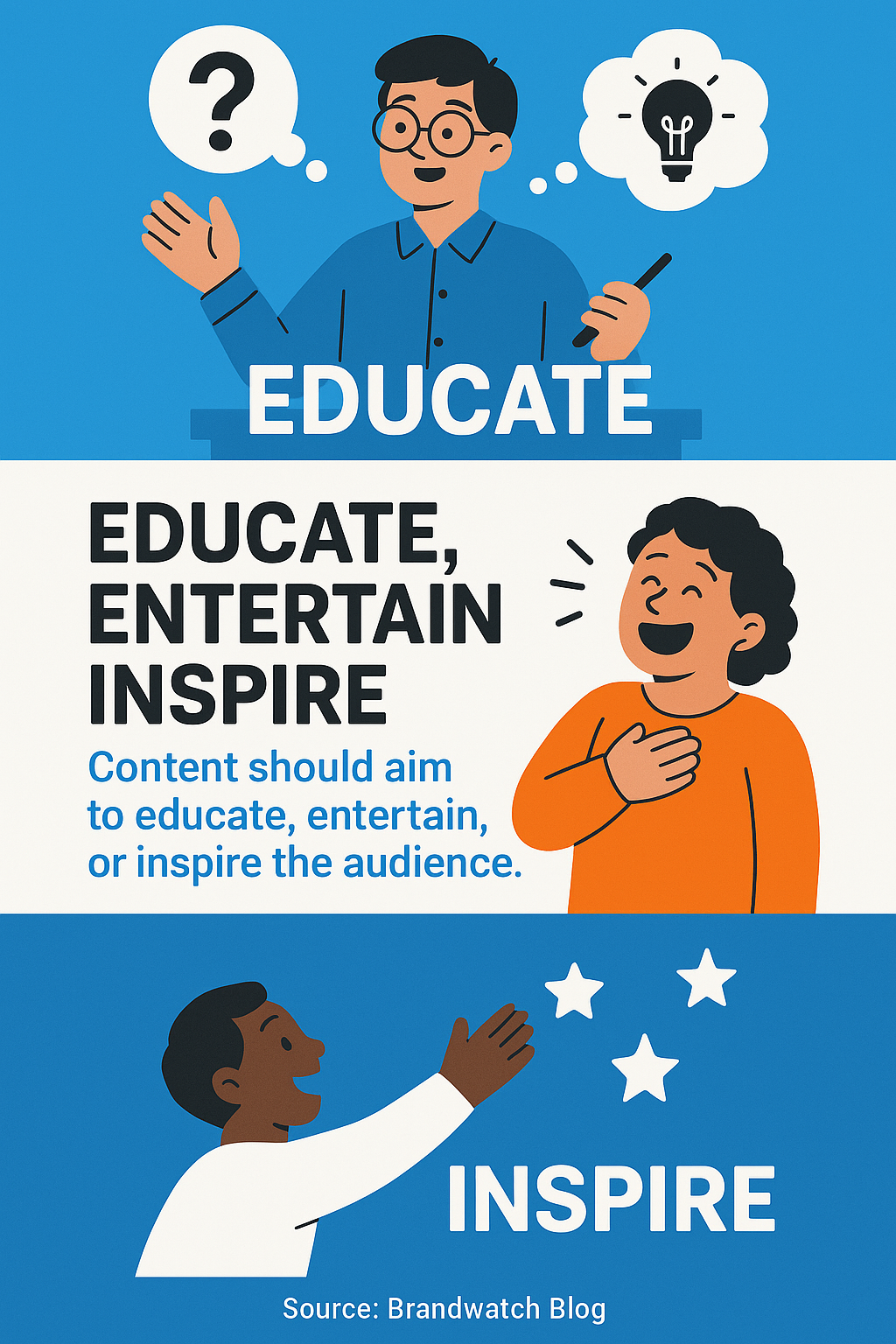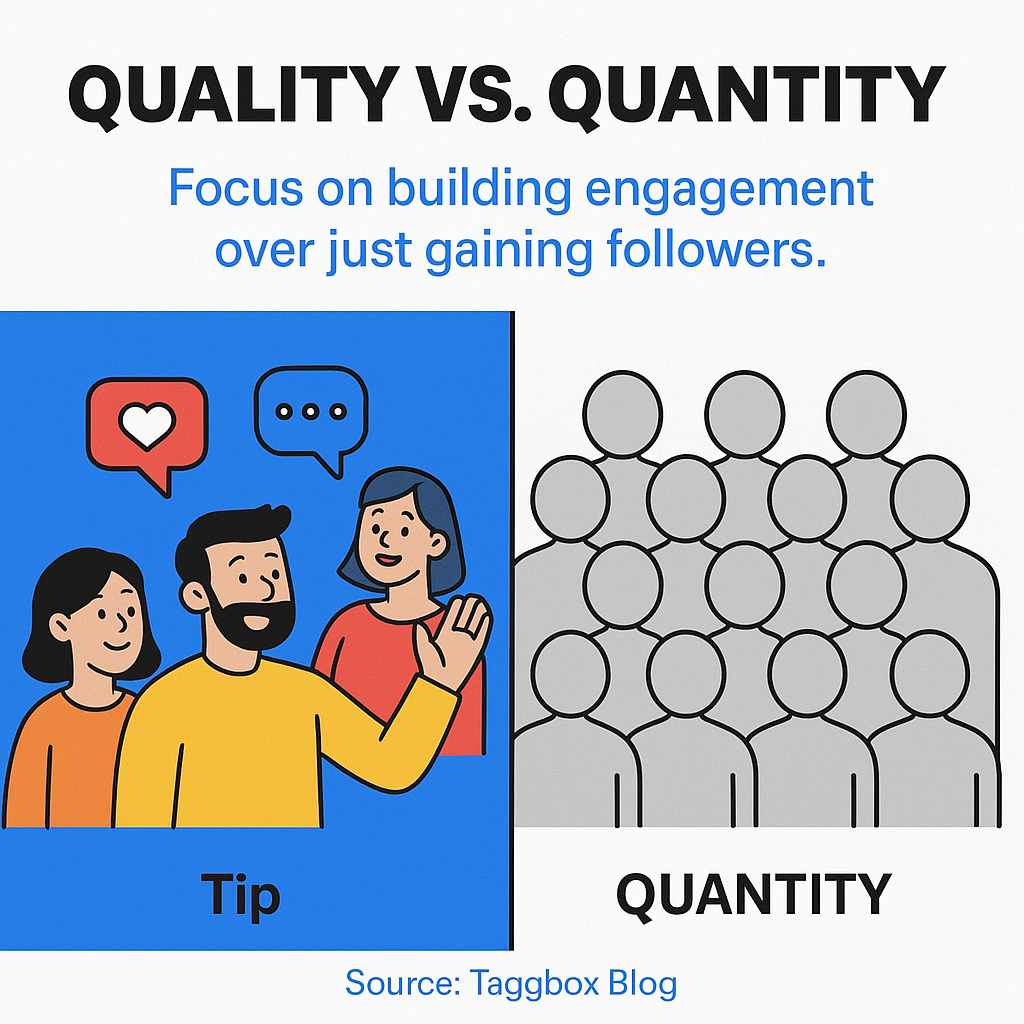Starting Your Journey as an Influencer: A Beginner’s Guide

You’ve been scrolling social media and thinking “I could totally do this,” right? Well, here’s the thing – you absolutely can! But here’s what 75% of users aged 18–24 who follow at least one influencer don’t realize: becoming a successful influencer isn’t just about posting pretty pictures and hoping for the best (Source: Sprout Social). It’s about building a sustainable personal brand that connects with real people and creates genuine value.
The influencer marketing space remains incredibly effective, especially on Instagram where visually striking content performs best (Source: Brandwatch Blog). But here’s what separates the successful influencers from those who burn out after three months: they do the foundational work first. We’re talking about defining your niche, understanding your audience, and building your brand voice before you even think about hitting “publish” on that first post.
This complete beginner’s roadmap will walk you through every step you need to take – from figuring out what makes you unique to eventually monetizing your influence. No fluff, no unrealistic promises about overnight success, just the real deal on how to build something that lasts. Ready to turn your social media dreams into reality?
Foundation First: Setting Clear Goals Before You Start Posting
Before diving into content creation, you need to get crystal clear on what success looks like for you. Setting specific, measurable goals helps guide your content strategy and platform selection – without them, you’re essentially throwing spaghetti at the wall and hoping something sticks (Source: Brandwatch Blog). Whether you want to grow brand awareness, build a following, or eventually monetize through partnerships, defining these objectives upfront saves you months of spinning your wheels.
Think about it this way: would you start a road trip without knowing your destination? Your influencer journey needs that same level of intentional planning. Smart goal-setters often use frameworks like SMART goals (Specific, Measurable, Achievable, Relevant, Time-bound) to create concrete targets they can actually track and achieve.
| Goal Type | Example Target | Success Metric | Timeline |
|---|---|---|---|
| Brand Awareness | Establish expertise in fitness | Monthly reach of 50K | 6 months |
| Follower Growth | Build engaged community | 10K followers with 3%+ engagement | 12 months |
| Monetization | Generate income from influence | $2K monthly from partnerships | 18 months |
The beauty of clear goals is they help you make decisions faster. When you’re offered a collaboration opportunity, you can quickly assess: does this align with my objectives? Will my audience find value in this? Does it match my brand? Having that clarity makes the difference between purposeful growth and random activity that leads nowhere.
Finding Your Sweet Spot: Choosing the Right Niche for Long-Term Success

Your niche is basically your “thing” – the topic area where you’ll build your expertise and attract your ideal audience. The most successful influencers don’t try to be everything to everyone; they pick one area and become the go-to person for that specific topic (Source: Taggbox Blog). This focus helps you create more targeted content and makes it easier for brands to understand what you’re about when partnership opportunities arise.
Here’s the key: your niche should sit at the intersection of what you’re genuinely passionate about, what you know well, and what people actually want to learn about. Don’t just chase trends or pick something because it seems profitable. Building authentic connections with other influencers in your space becomes much easier when you’re genuinely excited about your content area.
Research is your best friend here. Spend time analyzing existing influencers in potential niches – what type of content performs well? How engaged are their audiences? What gaps could you potentially fill? The goal isn’t to copy what’s already out there, but to understand the market and find your unique angle within it.
- Health and wellness (fitness, nutrition, mental health)
- Lifestyle and fashion (sustainable living, budget fashion, minimalism)
- Technology and gaming (reviews, tutorials, industry insights)
- Food and cooking (specific cuisines, dietary restrictions, budget meals)
- Travel and adventure (budget travel, solo female travel, family adventures)
Understanding the micro-influencer space is especially important as you’re starting out. Micro-influencers often have higher engagement rates and more authentic connections with their audiences than mega-influencers, making this a smart place to begin your journey.
Know Your Audience: Deep Research for Better Content
Understanding exactly who you’re creating content for makes the difference between posts that flop and content that really connects. You need to dig deeper than basic demographics – we’re talking about understanding their daily challenges, what motivates them, where they hang out online, and what type of content actually helps them (Source: Sprout Social). This insight becomes your content goldmine.
Start by creating detailed audience personas. Think about your ideal follower: What does their typical day look like? What problems are they trying to solve? What social media platforms do they prefer? What tone of voice resonates with them? The more specific you get, the better you can tailor your content to speak directly to their needs and interests.
| Research Method | What You’ll Learn | Time Investment | Best For |
|---|---|---|---|
| Social media analytics | Demographics, engagement patterns | 1 hour weekly | Understanding current followers |
| Competitor audience analysis | Content preferences, pain points | 2-3 hours monthly | Market research |
| Direct surveys | Specific feedback, content requests | 30 minutes setup | Engaged community insights |
| Comment monitoring | Real reactions, questions | 15 minutes daily | Ongoing audience pulse |
Don’t forget to use the analytics tools available on each platform. Instagram Insights, for example, shows you when your audience is most active, what content types they engage with most, and demographic breakdowns that can inform your content strategy. These insights help you post at optimal times and create more of what your audience actually wants to see.
Building Your Personal Brand Foundation Before Going Live
Your personal brand is essentially your unique promise to your audience – what they can expect from following you and why you’re different from everyone else in your niche. This isn’t about being fake or creating some perfect online persona; it’s about amplifying the authentic parts of yourself that will resonate with your target audience (Source: Taggbox Blog). Think of it as your personality’s highlight reel.
Start with your brand voice and personality. Are you the encouraging friend, the straight-talking expert, or the behind-the-scenes insider? Your tone should feel natural to you because authenticity always wins in the long run. Developing a consistent brand voice helps ensure your content feels cohesive across all platforms and creates a memorable experience for your audience.
Visual consistency matters just as much as your voice. This doesn’t mean every photo needs to look identical, but having a recognizable aesthetic helps people immediately identify your content in their feeds. Choose a color palette, decide on your photography style, and think about what visual elements will become your signature look.
| Brand Element | Questions to Consider | Implementation |
|---|---|---|
| Voice & Tone | How do you naturally speak? What personality traits shine through? | Write captions in your natural voice |
| Visual Style | What colors represent you? What photography style feels authentic? | Create templates and presets |
| Content Themes | What topics will you consistently cover? What’s your unique angle? | Plan content pillars and series |
| Values & Mission | What do you stand for? What change do you want to create? | Weave into content and partnerships |
Your bio and profile setup deserve serious attention too. This is prime real estate that tells visitors exactly what they’ll get from following you. Use keywords related to your niche, include a clear value proposition, and don’t forget a call-to-action. Whether it’s linking to your latest content or encouraging people to turn on notifications, give people a clear next step.
Content Creation Made Simple: Types That Actually Work

Content creation doesn’t have to feel overwhelming when you understand what actually drives engagement. Focus on creating content that either educates, entertains, or inspires your audience – bonus points if you can combine two or all three in a single post (Source: Brandwatch Blog). The secret sauce isn’t having the fanciest equipment or perfect lighting; it’s consistently providing value in an authentic way that resonates with your specific audience.
Creating engaging social media content starts with understanding what formats work best for your message. Sometimes a simple carousel post explaining a step-by-step process hits harder than a highly produced video. Other times, a raw, behind-the-scenes story creates more connection than polished content ever could.
Instagram’s visual nature makes it perfect for lifestyle, fashion, beauty, and travel niches, but don’t let that limit you – creators in every niche can find success with compelling visuals and engaging captions (Source: Sprout Social). The key is adapting your content format to serve your message, not the other way around.
- Educational posts: Tutorials, tips, and how-to guides that solve specific problems
- Behind-the-scenes content: Process videos, day-in-the-life content, and authentic moments
- User-generated content: Resharing follower content, testimonials, and community highlights
- Interactive content: Polls, Q&As, challenges, and content that encourages participation
- Personal storytelling: Sharing experiences, lessons learned, and vulnerable moments
Consistency beats perfection every single time. It’s better to post regularly with good content than to post sporadically with “perfect” content. Your audience wants to see the real you, not some impossible standard. Start with what you can maintain – whether that’s posting three times a week or daily – and build from there as you get more comfortable with the process.
Platform-Specific Strategy: Mastering Instagram for Influencer Success
Instagram remains the powerhouse platform for influencer marketing, and for good reason – its visual format and diverse content options give you multiple ways to connect with your audience (Source: Sprout Social). But here’s what many beginners miss: each feature (posts, stories, reels, IGTV) serves a different purpose in your overall strategy, and mastering this ecosystem requires understanding how they all work together.
Your feed posts are your permanent portfolio – these should represent your best, most on-brand content. Stories are perfect for real-time connection, behind-the-scenes content, and driving engagement through polls and questions. Reels are your discovery engine, helping new audiences find you through the algorithm. Building a strong social media presence means leveraging each feature strategically rather than randomly.
| Content Type | Best Use Cases | Posting Frequency | Engagement Strategy |
|---|---|---|---|
| Feed Posts | High-quality content, portfolio pieces | 4-7 times per week | Thoughtful captions, hashtag strategy |
| Stories | Behind-the-scenes, real-time updates | Daily | Polls, questions, swipe-ups |
| Reels | Trending content, tutorials, entertainment | 3-5 times per week | Trending audio, quick tips |
| IGTV/Long-form | In-depth tutorials, longer storytelling | 1-2 times per week | Series content, educational deep-dives |
Hashtag strategy deserves special attention because it’s how new people discover your content. Use a mix of high-volume hashtags (over 100K posts), medium-volume hashtags (10K-100K posts), and niche hashtags (under 10K posts). The niche hashtags might have smaller audiences, but they’re often more engaged and relevant to your specific content.
Engagement isn’t just about getting likes and comments – it’s about building genuine relationships with your community. Respond to comments thoughtfully, engage with other creators’ content in your niche, and show up consistently in your audience’s feeds. Strong social media branding happens when people start recognizing and actively seeking out your content.
Growth Tactics That Actually Work (No Shortcuts Required)

Real, sustainable growth happens when you focus on building genuine connections rather than chasing vanity metrics. The influencers who last in this space understand that 1,000 engaged followers who truly care about your content are infinitely more valuable than 10,000 bought followers who never interact with anything you post (Source: Taggbox Blog). Quality always trumps quantity when it comes to building an audience that converts.
Collaboration is one of the most powerful growth strategies available to new influencers. Partner with other creators in your niche for takeovers, joint live sessions, or collaborative content. These partnerships expose you to their audience while providing fresh content for your followers. Just make sure any collaborations feel authentic and provide genuine value to both audiences.
Cross-promotion across platforms amplifies your reach without requiring you to create entirely new content. A single piece of content can be adapted for Instagram, repurposed for Twitter, turned into a blog post, or transformed into a YouTube video. This strategy maximizes your content’s lifespan while helping you build audiences across multiple platforms.
- Engage genuinely with your niche community daily
- Collaborate with micro-influencers in complementary niches
- Use giveaways and challenges strategically to boost engagement
- Cross-promote content across all your social platforms
Analytics are your growth compass – they show you what’s working and what isn’t. Pay attention to which posts get the most saves (usually your most valuable content), what times your audience is most active, and which hashtags drive the most engagement. Use these insights to refine your strategy rather than just posting blindly and hoping for the best.
Monetization: When and How to Start Earning

The question every aspiring influencer asks: “When can I start making money?” The honest answer is that monetization typically comes after you’ve established a loyal, engaged following and proven you can consistently create valuable content (Source: Brandwatch Blog). Rushing into monetization before you’ve built trust with your audience often backfires and can damage the authentic relationships you’ve worked hard to build.
Focus first on building genuine engagement and establishing yourself as a trusted voice in your niche. Brands want to partner with influencers who have audiences that actually listen and take action, not just scroll past. This means several months of consistent effort before monetization becomes viable – but the wait is worth it when you can command better rates because of your engaged community.
| Monetization Method | Typical Requirements | Earning Potential | Best For |
|---|---|---|---|
| Sponsored Posts | 5K+ engaged followers | $50-$500+ per post | Brand partnerships |
| Affiliate Marketing | 1K+ followers | 5-30% commission | Product recommendations |
| Digital Products | Strong audience trust | $10-$1000+ per sale | Educational content creators |
| Brand Ambassadorships | 10K+ followers, strong engagement | $100-$2000+ monthly | Long-term partnerships |
When you do start monetizing, transparency is everything. Always disclose partnerships clearly and only promote products or services you genuinely believe in. Your audience’s trust is your most valuable asset – once you lose that, it’s nearly impossible to get back. Following influencer marketing best practices protects both you and your audience while building sustainable revenue streams.
Common Mistakes to Avoid as a New Influencer
The biggest mistake new influencers make? Trying to grow too fast by taking shortcuts that ultimately hurt their long-term success. Buying followers, using engagement pods, or posting content that doesn’t align with their brand might provide temporary ego boosts, but they create weak foundations that crumble when brands start looking for real influence and authentic engagement (Source: Sprout Social).
Another common pitfall is inconsistency – posting sporadically, changing niches frequently, or having wildly different content quality from post to post. Your audience follows you for a reason, and constantly shifting your approach confuses them and makes it harder to build the trust that’s essential for long-term success.
Don’t neglect the business side of influencing either. Keep track of your metrics, understand your audience demographics, and treat this like the business it can become. Many talented creators struggle because they focus only on content creation while ignoring the strategic and analytical aspects that drive sustainable growth and monetization opportunities.
| Common Mistake | Why It Hurts | Better Approach |
|---|---|---|
| Buying followers | Low engagement, damaged credibility | Focus on organic growth strategies |
| Inconsistent posting | Algorithm penalty, audience confusion | Create sustainable content calendar |
| Ignoring analytics | Missed optimization opportunities | Review metrics weekly, adjust strategy |
| Monetizing too early | Breaks audience trust | Build relationship first, monetize second |
Remember that comparison is the thief of joy – and progress. Every influencer’s journey looks different, and what works for someone else might not work for you. Focus on your own growth, celebrate small wins, and stay consistent with your unique approach rather than constantly changing strategies based on others’ success stories.
Your Next Steps: Creating a Sustainable Influencer Career
Building a successful influencer career isn’t about overnight success or viral moments – it’s about creating sustainable systems that allow you to consistently provide value while building genuine relationships with your audience. Start with one platform, master it, then expand. Choose one niche, establish yourself as a trusted voice, then consider branching out. This methodical approach might seem slower, but it creates much stronger foundations for long-term success.
Create a content calendar and stick to it. Plan your content themes, posting schedule, and engagement strategy in advance so you’re not scrambling for ideas or posting randomly. This doesn’t mean your content has to be rigid or lose its spontaneity – it just means you have a framework that keeps you consistent and strategic in your approach.
Most importantly, remember why you started this journey. Whether it’s sharing your passion, building a community, or creating a new income stream, keep that core motivation front and center as you navigate the challenges and opportunities that come with building your influence. The most successful influencers never lose sight of the genuine desire to connect and provide value that brought them to this space in the first place.
Your influencer journey starts with a single post, but it’s built through hundreds of small, consistent actions that compound over time. Start today, stay authentic, and trust the process. Your audience is out there waiting for exactly what you have to offer – you just need to show up consistently and give them a reason to stick around.





